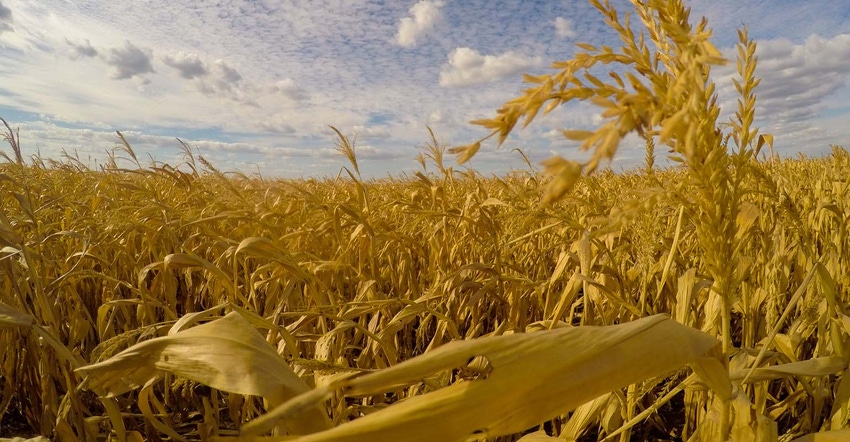October 7, 2020

Grain futures were rattled by news of the president's COVID-19 diagnosis Friday morning, but support was uncovered from buyers still reacting to the mid-week Grain Stocks report.
After making an unprecedented cut to the June Stocks report estimate, USDA tallied last year's leftover corn inventories at 1.995 billion bu., some 250 million bu. below the average trade guess for the second largest surprise on record (only behind last year).
Why the big miss?
It wasn't from USDA reducing last year's crop size, like so many had called for and pegged as the likely reason for a larger than anticipated stocks drawdown. Indeed, USDA analysts did use the September report to adjust last year's corn crop. But it went up in size! The government upped last year's output just marginally by boosting the 2019 yield average by 1/10th of a bushel to 167.4 bpa.
Rather than marking down the crop, USDA implied usage was running better than expected; however, it is hard to pencil out given the pandemic's recent pressure on consumption – both feed usage and ethanol.
Alternative arguments cut the estimators some slack by contributing parts of the stocks shortfalls to excessive shrinkage for corn and large amounts of soybeans in transit for export not being counted.
No matter the reason, crop reports continue to feature volatility linked to USDA's "residual" component that serves as the rug that yield estimating errors or other model biases can be swept under.
On this Friday's crop report, we'll see a resulting boost to old-crop demand when these new September stocks numbers plug into the balance sheet to reset carryout and carry-in estimates.
More important now, though, will be to analyze the October report for guidance on new crop yield and acres.
Harvest: better than expected?
Early harvest results here in Iowa were described as better than expected, setting us up for a story we'd heard before. Results seem to have tapered off over the previous two weeks and lately it's a lot of "good, but not the best ever," "not 2018", and for many, not as good as last year either.
Early chatter about yield performance may have been the most favorable because it was based on the earliest planted corn and because that talk trickled in along with the usual south-to-north harvest progression.
In Illinois, bumper yields are the case for many in the southern third of the state where they didn't turn dry until much later than the northern third. Like for Iowa, drought did take top end for many fields in northern Illinois, some of which were also impacted by the derecho winds.
At 203 bpa, USDA's September estimate had Illinois up 12.2% over last year's 181 bpa, which in turn was down from the 2018 record state average of 210 bpa. We just covered questions about the accuracy of USDA's crop size projections for 2019 – is 203 bpa this year really something like 15% percent or more of the state's true 2019 yield? Probably not, as the 2019 Illinois number may not be the first place analysts would go looking for proof that the government had overestimated national yield last year.
That said, there remains a general consensus among the trade that USDA is running high on yield estimates again in 2020, and this time Illinois may be most ripe for adjustment seeing that it tops the yield list for Corn Belt states this year.
Another influential government report
USDA is bound to stay influential with the October WASDE report coming out this Friday. What should you look for?
One tip is to be wary of possible traps that can come along with buying or selling nearby puts or calls that build up enhanced implied volatility premium in the time leading up to the release of a report.
Have price targets established well before report day and consider option spreads that would establish a covered sale.
With current focus on finding opportunities to re-own previous sales with the purchase of call options, we will also watch for values for a bull-call spread that would involve simultaneous sale of a call.
Next week, we will discuss option spreads for downside protection, like the "collar" or "fence" strategy.
Joe Camp is Director of Managed Programs for Market Focus, a division of Commstock Investments. He can be reached at [email protected] or call 712-227-1110.
Futures trading involves risk. The risk of loss in trading futures and/or options is substantial and each investor and/or trader must consider whether this is a suitable investment. Past performance is not indicative of future results. Trading advice is based on information taken from trades and statistical services and other sources that CommStock Investments believes to be reliable. We do not guarantee that such information is accurate or complete and it should not be relied upon as such. Trading advice reflects our good faith judgment at a specific time and is subject to change without notice. There is no guarantee that the advice we give will result in profitable trades.
The opinions of the author are not necessarily those of Farm Futures or Farm Progress.
You May Also Like




